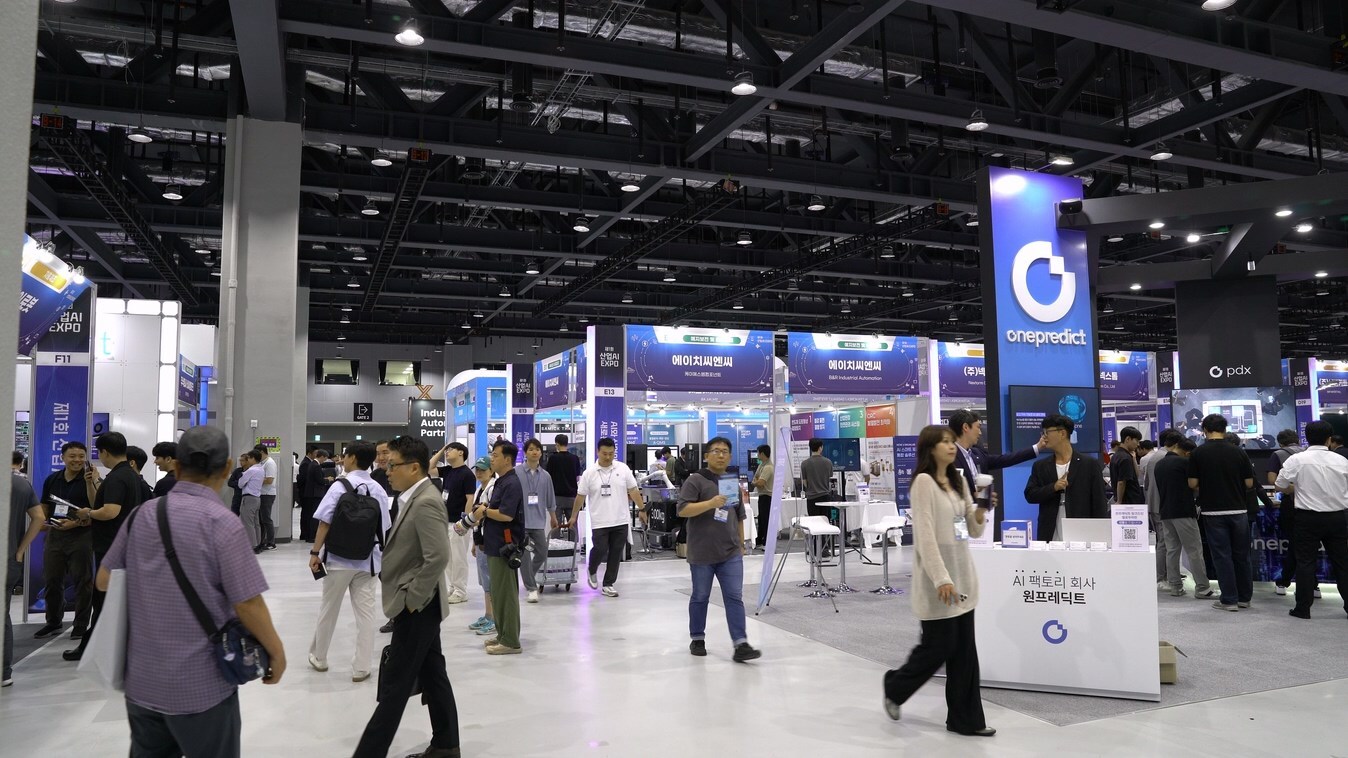गवर्नेंस फर्स्ट: कैसे एंटरप्राइज़ बड़े पैमाने पर विश्वसनीय एआई बना रहे हैं
Author: Editorial Team

विभिन्न उद्योगों में, व्यापार प्रक्रियाओं में एआई की तेज़ी से अपनाने ने औपचारिक शासन और जोखिम नियंत्रणों के विकास से आगे निकल गया है। विशेषज्ञों की एक बढ़ती हुई आवाज़ चेतावनी देती है कि एआई पहले से ही दिन-प्रतिदिन के वर्कफ़्लो में समाहित है, अक्सर IT निगरानी के बिना। उद्योग रिपोर्टिंग के हाल के एक रैपिड स्कैन ने एक पैटर्न को उजागर किया: बड़े संगठनों के भीतर अधिकतर एआई टूल्स 'शैडो' में काम करते हैं, और संवेदनशील डेटा बार-बार एआई-समर्थित विशेषताओं के माध्यम से ट्रैवेल करता है जिन्हें विभाग शायद पूरी तरह समझ या नियंत्रित नहीं कर पाते। इसके साथ ही, नियामक जवाबदेही के गैप को पाटने के लिए कदम उठा रहे हैं। यूरोप का AI Act, पारदर्शिता, दस्तावेज़ीकरण, और जोखिम आकलनों के लिए आवश्यकताओं के साथ, एक ऐसे नए युग का संकेत देता है जिसमें शासन नवाचार में बाधा नहीं बल्कि स्थायी स्केल के लिए एक आधार है। इस संदर्भ में, प्रमुख कंपनियाँ governance-first डिज़ाइन के साथ जवाब दे रही हैं: सुरक्षा, व्याख्यात्मकता, और नीति नियंत्रणों को उत्पादों में शुरू से ही समाहित करना, deployment के बाद इन्हें ऐड-ऑन के रूप में न मानना।
उद्योग‑चिन्तन‑नेतृत्व से उभरने वाले एक मूल विचार यह है कि शासन उपयोगकर्ताओं के लिए अदृश्य होना चाहिए जबकि नीति और सुरक्षा टीमें इसके लिए दृश्यमान हों। कई प्रदाताओं ने अपने AI ऑफरिंग्स के भीतर governance controls को एकीकृत करना शुरू कर दिया है ताकि एक्सेस, आउटपुट, और retention एक ही अनुपालन छत के अंतर्गत नियंत्रित हों। LeapXpert, उदाहरण के लिए, Maxen प्लेटफॉर्म में governance-first दृष्टिकोण बताता है, AI को एंटरप्राइज़ guardrails के भीतर एम्बेड करते हुए इसे उपभोक्ता चैट एप्स पर चिपकाने के बजाय। यह दृष्टिकोण सुनिश्चित करता है कि एक्सेस उपयोगकर्ता स्तर पर लागू किया जा सके, आउटपुट स्पष्ट/व्याख्यात्मक हों, और डेटा संरक्षण नियम संगठन के भीतर AI फीचर्स के प्रसार के बावजूद सही बनें। executives के लिए पाठ स्पष्ट है: उत्पाद रोडमैप में governance को शामिल करना गति पर कर नहीं है बल्कि सुरक्षित, टिकाऊ AI-समर्थित वृद्धि की ओर मार्ग है।
मौजूदा गति को समझने के लिए एक उपयोगी दृष्टिकोण ठोस कॉर्पोरेट विकास देखना है जो विश्वसनीय AI की तरफ बढ़ाव को दर्शाते हैं। VisionSys AI Inc., जिसे पहले TCTM Kids IT Education Inc. के नाम से जाना जाता था, ने हाल ही में नाम परिवर्तन की घोषणा की और Cayman Islands रजिस्ट्री से नाम-परिवर्तन पंजीकरण प्राप्त करने के बाद Nasdaq पर VSA प्रतीक के अंतर्गत सूची बनाने की योजना की घोषणा की। कंपनी खुद को एक उभरती हुई टेक्नोलॉजी सेवाओं की फर्म के रूप में वर्णित करती है जो ब्रेन-मैशीन इंटरैक्शन और AI-चालित स्वास्थ्य और जैव-तकनीक समाधानों पर केंद्रित है। औपचारिक रीब्रांडिंग AI-समर्थित सेवाओं के लिए एक व्यापक, अधिक महत्वाकांक्षी योजना का संकेत देती है, जबकि कंपनी के मौलिक जोर को बनाए रखती है—बुद्धिमान प्रणालियाँ जो नवाचार को वास्तविक-विश्व प्रभाव से जोड़ती हैं।

रब्रिक और CrowdStrike ने दुर्भावनापूर्ण परिवर्तनों के बाद पहचान कॉन्फ़िगरेशन को पुनर्स्थापित करने के लिए गहरी एकीकरण की घोषणा की।
सुरक्षा और पहचान-प्रबंधन इस शासन-केंद्रित कथा के केंद्र में हैं। एक प्रमुख उद्योगगत कदम में, रब्रिक ने CrowdStrike Falcon Next-Gen Identity Security के साथ एक विस्तारित एकीकरण की घोषणा की। यह सहयोग ग्राहकों को दुर्भावनापूर्ण पहचान परिवर्तन को सर्जिकल तरीके से वापस रोलबैक करने और पहचान प्रदाताओं को सुरक्षित कॉन्फ़िगरेशन में पुनर्स्थापित करने में सक्षम बनाता है। पहचान-आधारित हमलों की गति और परिष्कार बढ़ने के कारण, ज्ञात‑अच्छी स्थिति पर लौटने की क्षमता—शून्य से शुरू करके—एक व्यावहारिक और स्केलेबल रक्षा प्रस्तुत करती है। यह अपडेट एक व्यापक उद्योग‑रुझान को रेखांकित करता है: पहचान की मजबूती अब एक प्राथमिक सुरक्षा समस्या है, न कि गौण चिंता।
Beyond governance and security, enterprises are turning to architecture that speeds detection and reduces cost through smarter data handling. ReliaQuest unveiled GreyMatter Transit, the industry’s first native data pipeline capable of detecting threats in motion rather than only at endpoints or SIEMs. By prioritizing data visibility and reducing redundant storage, GreyMatter Transit promises faster threat hunting, improved correlation, and lower total storage cost. In practice, this means security teams can see and respond to suspicious activity as it unfolds, rather than waiting for log data to arrive at a centralized repository.

रब्रिक और CrowdStrike ने दुर्भावनापूर्ण परिवर्तनों के बाद पहचान कॉन्फ़िगरेशन को पुनर्स्थापित करने के लिए गहरी एकीकरण की घोषणा की।
The industry’s broader ecosystem is also aligning around trustworthy AI through strategic partnerships and memberships. Damco Solutions recently joined The Center for Trustworthy AI as a founding member, signaling a commitment to building AI systems that meet rigorous standards for safety, accountability, and governance across technology services. Such coalitions are important because they provide a shared framework for risk assessment, auditing, and regulatory compliance—elements that enterprises increasingly need as AI becomes embedded in critical functions.

Damco Solutions becomes a founding member of The Center for Trustworthy AI.
In the services arena, the now-rebranded VisionSys AI Inc. illustrates how governance and AI can be embedded into client workflows. The company’s press materials describe an expanded portfolio that leverages brain-machine interaction and AI-enabled health and biotech solutions. As featured businesses look to scale AI across regulated industries, the emphasis remains on meeting stringent privacy requirements, implementing robust audit trails, and ensuring that outputs from automated decision systems can be explained and verified.
The enterprise software landscape is increasingly driven by AI-enabled operations across back-office tasks, where orchestration platforms must balance speed with compliance. Millennial Shift Technologies and Patra Corporation announced a partnership to bring Patra’s OnDemand processing into the mShift Marketplace, delivering an integrated back-office servicing center for brokers and agents. The arrangement enables submission clearance, AI-driven policy checking and stamping, compliance and licensing, and surplus lines filing without leaving the marketplace. By standardizing processing workflows and enabling AI‑assisted checks, the collaboration exemplifies how back-office automation can scale responsibly without compromising regulatory obligations.
Announced in parallel were industry-wide demonstrations of agentic AI in enterprise hackathons and innovation programs. Vista Equity Partners highlighted winners of its 8th Annual North American and Global Hackathons, with a focus on agentic AI that expands automation while preserving control and governance. The events, which foster cross-pollination among developers inside Vista’s portfolio, illustrate how the enterprise software ecosystem can accelerate practical, governance-conscious AI solutions that address real business needs.

Vista Equity Partners announces the winners of its Agentic AI Hackathons.
On the regulatory frontier, the industrial AI wave is gaining momentum across regions, with events such as The Korea Industry Daily’s Industrial AI EXPO 2025 marking milestones in Korea’s AI-driven industrial transformation. The expo showcased AI applications across manufacturing and electronics, signaling how national programs are accelerating the deployment of AI at scale in industry. The event serves as a microcosm of the global push to link AI capabilities with tangible productivity gains within regulated environments, where governance and accountability are non-negotiable.

Industrial AI EXPO 2025 in Seoul highlights Korea’s push toward AI-driven industrial transformation.
A recurring theme across these developments is the risk of hidden AI—features that deploy inside familiar apps without explicit IT approval. The Fast Company piece on AI governance emphasizes a “shadow AI crisis,” where tools ship updates and new capabilities without oversight, leading to data exposure and governance gaps. It points to a rising need for governance-first architectures and continuous discovery across SaaS platforms. The idea is not to shun AI but to make it transparent: to inventory, monitor, and govern AI-enabled features in real time, ensuring compliance with data-handling rules, retention policies, and regulatory requirements.
Industry leaders argue that the future of AI lies in transparency and control baked into the product design. LeapXpert’s approach demonstrates how governance can be woven into the fabric of AI-enabled communications, enabling explainable outputs, retention controls, and access governance that persist across software updates. Regulators’ focus is intensifying, and the EU AI Act’s enforcement is moving from theory to practice. In this framework, executives are urged to treat governance not as a burden but as a competitive advantage—one that enables safer experimentation, faster innovation, and long-term trust with customers and partners.
The path forward envisions real-time discovery paired with governance-first assistants that keep data inside compliant boundaries while providing actionable insights. As one industry observer put it, the companies that will succeed are those that build visibility and control into their AI strategies from day one. That means disclosing AI usage, explaining how outputs are generated, and retaining data in auditable ways. In short, governance‑forward AI is not antithetical to innovation; it is its essential scaffolding, enabling scalable, accountable, and ethical AI deployments across sectors.
In a practical sense, the unglamorous work of governance—tracking who has access, auditing outputs, enforcing retention, and ensuring data minimization—will increasingly be the differentiator for AI programs. For organizations that want speed without surprise, the answer is not to abandon AI projects but to embed the safeguards that allow them to move quickly and responsibly. The converging signals from technology providers, industry coalitions, and regulators point to a future where governance is the driver of durable AI innovation rather than a brake on it.

फास्ट कंपनी ने ‘shadow AI’ के जोखिम पर प्रकाश डालते हुए governance-first AI अपनाने का तर्क किया है।
Concluding, the current moment in AI adoption is less about chasing the next breakthrough and more about building a reliable operating system for AI within enterprises. The governance-first model shows promise across public and private sectors: from the engineering desks inside VisionSys AI to the security operations centers using GreyMatter Transit, from regulatory-driven collaborations to the back-office automation powered by OnDemand services. The throughline is clear: with continuous discovery, transparent governance, and responsible deployment, AI can accelerate productivity while maintaining trust, compliance, and accountability. The companies leading this transition do not view governance as a constraint but as a strategic asset that unlocks scalable, resilient AI at enterprise pace.